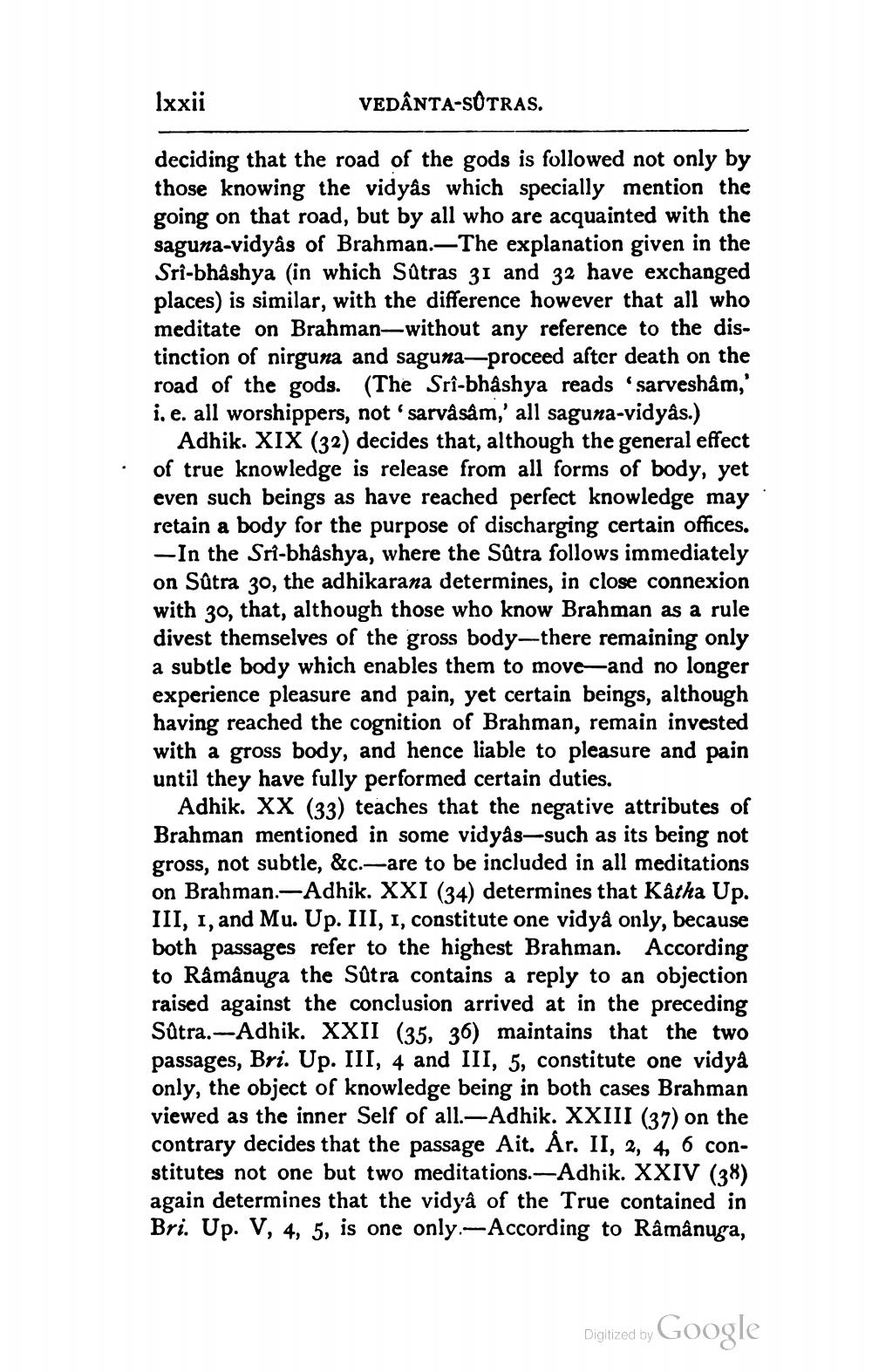________________
Ixxii
VEDÂNTA-SOTRAS.
deciding that the road of the gods is followed not only by those knowing the vidyâs which specially mention the going on that road, but by all who are acquainted with the saguna-vidyâs of Brahman.—The explanation given in the Sri-bhashya (in which Sutras 31 and 32 have exchanged places) is similar, with the difference however that all who meditate on Brahman-without any reference to the distinction of nirguna and saguna-proceed after death on the road of the gods. (The Srî-bhashya reads "sarveshâm,' i, e. all worshippers, not 'sarvâsâm,' all saguna-vidyâs.)
Adhik. XIX (32) decides that, although the general effect of true knowledge is release from all forms of body, yet even such beings as have reached perfect knowledge may retain a body for the purpose of discharging certain offices. - In the Sri-bhashya, where the Sätra follows immediately on Sûtra 30, the adhikarana determines, in close connexion with 30, that, although those who know Brahman as a rule divest themselves of the gross body--there remaining only a subtle body which enables them to move-and no longer experience pleasure and pain, yet certain beings, although having reached the cognition of Brahman, remain invested with a gross body, and hence liable to pleasure and pain until they have fully performed certain duties.
Adhik. XX (33) teaches that the negative attributes of Brahman mentioned in some vidyâs-such as its being not gross, not subtle, &c.—are to be included in all meditations on Brahman.-Adhik. XXI (34) determines that Katha Up. III, 1, and Mu. Up. III, 1, constitute one vidyâ only, because both passages refer to the highest Brahman. According to Râmânuga the Sätra contains a reply to an objection raised against the conclusion arrived at in the preceding Sútra.--Adhik. XXII (35, 36) maintains that the two passages, Bri. Up. III, 4 and III, 5, constitute one vidya only, the object of knowledge being in both cases Brahman viewed as the inner Self of all. --Adhik. XXIII (37) on the contrary decides that the passage Ait. År. II, 2, 4, 6 constitutes not one but two meditations.—Adhik. XXIV (38) again determines that the vidyâ of the True contained in Bri. Up. V, 4, 5, is one only.-According to Râmânuga,
Digitized by Google




